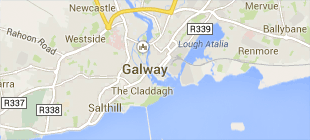-
Cúrsaí
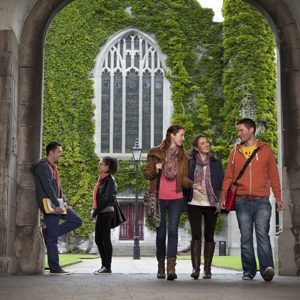
Cúrsaí
Tá roghnú cúrsa léinn ar cheann de na cinntí is tábhachtaí dá ndéanfaidh tú choíche! Féach na cúrsaí atá againn anseo agus an méid a deir mic léinn agus léachtóirí faoi na cúrsaí sin a bhfuil spéis agatsa iontu.
-
Saol na hOllscoile
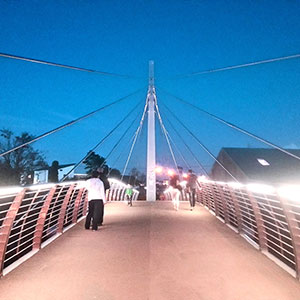
Saol na hOllscoile
Chuile bhliain roghnaíonn os cionn 4,000 duine Ollscoil na Gaillimhe mar chéad rogha. Faigh amach faoin saol in Ollscoil na Gaillimhe anseo.
-
Eolas Fúinn
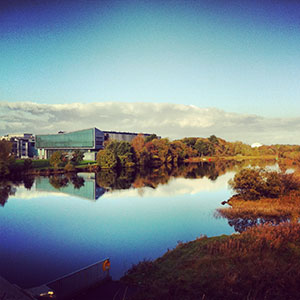
Eolas faoi Ollscoil na Gaillimhe
Bí ar an eolas faoin Ollscoil seo agus na fáthanna a bhfuil sí chomh speisialta sin – an stair thar a bheith spéisiúil a bhaineann leis an Ollscoil agus an nuacht is déanaí agus na hócáidí atá ar na bacáin.
-
Coláistí & Scoileanna
- Scoil na Tíreolaíochta, na Seandálaíochta agus Léann Éireannaigh
- Coláiste an Ghnó, an Bheartais Phoiblí & an Dlí
- Coláiste an Leighis, an Altranais & na nEolaíochtaí Sláinte
- Coláiste na hEolaíochta agus na hInnealtóireachta
- Scoil na dTeangacha, na Litríochtaí agus na gCultúr
- Roinn na Gaeilge
- An tAcadamh
- Stair
- Idirnáisiúnta
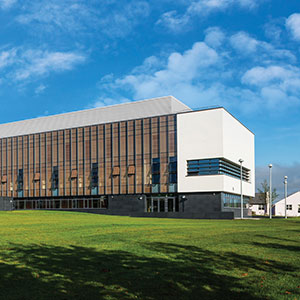
Coláistí & Scoileanna
Tá aitheantas idirnáisiúnta bainte amach ag Ollscoil na Gaillimhe mar ollscoil atá á treorú ag an taighde agus rún daingean aici teagasc den chéad scoth a chur ar fáil i réimsí éagsúla saineolais.
-
Taighde
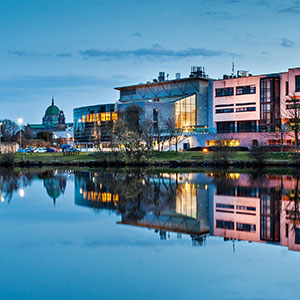
Nithe Fónta á gCruthú as Smaointe Úra
Tugann ár dtaighdeoirí aghaidh ar chuid de na dúshláin is práinní san 21ú Céad.
-
Gnó & Tionscal
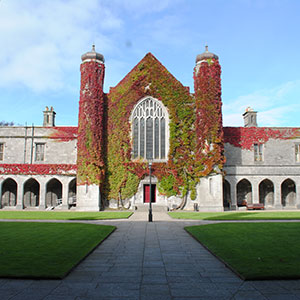
Tacaíocht do Thaighde Úrnua in Ollscoil na Gaillimhe
Déanaimid deiseanna tráchtála a chuardach agus a chothú don phobal taighde in Ollscoil na Gaillimhe, mar aon le comhpháirtíocht tionsclaíochta a chothú.
-
Alumni, Cairde & Lucht Tacaíochta
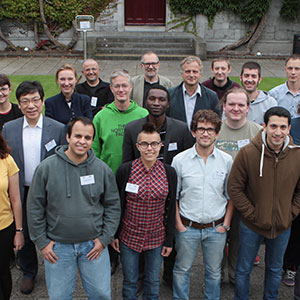
Alumni, Cairde & Lucht Tacaíochta
Tá os cionn 90,000 céimí de chuid Ollscoil na Gaillimhe ann ar fud an domhain. Déan nasc linn agus beidh teacht agat ar an gcomhphobal sin ar líne.
-
Rannpháirtíocht Pobail
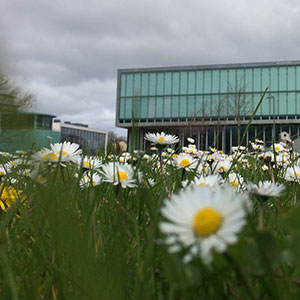
Rannpháirtíocht sa Phobal
In Ollscoil na Gaillimhe, creidimid go n-éireoidh níos fearr leat más féidir leat an méid a fhoghlaimíonn tú a chur i bhfeidhm i do shaol féin. Is mar gheall air sin go bhfuil béim mhór ar shocrúcháin oibre nó ar thionscadail phobail i gcuid mhór dár gcúrsaí.
Latest University News
22 September 2025
University of Galway named European champion for student services
University of Galway has been selected as a European champion for a flagship digitalisation project to simplify and secure recognition of academic credentials, promote student mobility and foster inclusion.
The prestigious recognition was awarded by the European Commission’s Directorate-General for Education, Youth, Sport and Culture and names the University as Ireland’s European Student Card Initiative (ESCI) Champion for 2025-2027.
The ESCI Champion award highlights the University’s ongoing leadership in advancing student mobility across Europe through digital innovation and collaboration, and demonstrates its strong commitment to the digitalisation of student services, streamlining the administrative processes for students participating in mobility programmes such as Erasmus+.
Specifically, the award recognises University of Galway’s achievements in implementing “Erasmus Without Paper”, an initiative designed to make higher education more interconnected, efficient and student-focused.
Professor David J. Burn, President of University of Galway, said: “We are honoured to be named Ireland’s ESCI Champion for 2025-2027. This recognition reflects the dedication of our staff and students in embracing digital innovation and European cooperation. We look forward to supporting the further digitalisation of higher education across Europe and sharing our experiences for the benefit of students everywhere.”
Sheena Duffy, Head of International, Higher Education Authority Ireland, said: “University of Galway’s selection as ESCI Champion is a testament to their leadership in digital transformation and student mobility. Their active role will be crucial in advancing the European Student Card Initiative, and we are confident that their expertise will inspire higher education institutions throughout Ireland and beyond.”
Representatives from the University’s Global Galway team will lead out on the ESCI Champion initiative and officially start the work at a kick-off meeting in Gothenburg, Sweden, this September.
Over the next two years, the University team will share their expertise at national and European events, engage with peer institutions and contribute to the broader ESCI community by sharing testimonials and best practices. The University’s efforts will help inspire and guide other higher education institutions in Ireland and across Europe on their own digitalisation journeys.
To find out more about the European Student Card Initiative and the ESCI Champions 2025-2027, visit: https://erasmus-plus.ec.europa.eu/news/introducing-the-esci-champions-2025-2027
Ends
16 September 2025
University of Galway hosts exhibition of Press Photographers Ireland awards 2025
University of Galway is hosting the exhibition of the Press Photography Ireland Awards 2025, featuring some of the most powerful moments in the world of news, sport, politics, arts and everyday life.
The gallery includes more than 100 photographs and is being displayed in the foyer of the Hardiman Building until the end of September.
All winning and shortlisted entries from the 47th annual awards hang in the exhibition, celebrating the very best in Irish press photography from 2024, both at home and abroad.
Among the highlights are award-winning images by Photographer of the Year James Crombie, who works with Inpho, one of Ireland’s leading sports photography agencies, and specialises in major sports events in Ireland and internationally, as well as nature. It is the third year in which he has won the coveted title.
Images are also in the exhibition from News Photographer of the Year Niall Carson, who works with PA Media, the leading news and sports agency for Ireland and the UK and specialises in current affairs and politics.
David Branigan, President of Press Photographers Ireland, said: "Photojournalism is the visual record of our life and times and especially in Ireland where we have a rich story-telling tradition it is especially cherished. The images presented in the AIB Press Photographer of the Year Award exhibition are the very best of truthful and accurate photography; these images anchor our reality, and it is an unmissable display."
Ends
16 September 2025
Cead pleanála faighte ag Ollscoil na Gaillimhe d’Fhoirgneamh Scoil
Tá fáilte curtha ag Ollscoil na Gaillimhe roimh an gcead pleanála atá faighte chun foirgneamh nua a thógáil do Scoil an Leighis.
Déanfar an tsaoráid nua a fhorbairt ar champas theas na hOllscoile, gar don Chearnóg.
Beidh ceithre urlár san fhoirgneamh, a bheidh thart ar 3,925 méadar cearnach ar mhéid, agus beidh aitriam gloinithe á nascadh le Bloc E, foirgneamh atá ann cheana féin, ar struchtúr é atá faoi chosaint agus a bhfuil tábhacht stairiúil agus ailtireachta ag baint leis.
Cuirfidh an fhorbairt leis an leathnú leanúnach atáthar á dhéanamh ar dheiseanna teagaisc agus foghlama i gColáiste an Leighis, an Altranais agus na nEolaíochtaí Sláinte in Ollscoil na Gaillimhe, lena n-áirítear an chéad ghrúpa mac léinn cógaisíochta ar an MPharm agus an clár Leighis (Iontráil do Chéimithe) atá le tosú i Meán Fómhair 2027.
Cuirfidh an foirgneamh nua áiseanna den scoth ar fáil le haghaidh teagaisc agus taighde, lena n-áirítear seomraí do ranganna teagaisc, seimineáir agus cruinnithe, spásanna staidéir agus limistéir chomhoibríocha, saotharlanna taighde ardleibhéil agus oifigí riaracháin.
Mar chuid de spriocanna inbhuanaitheachta níos leithne na hOllscoile, áirítear mar chuid den dearadh córais ghléasra agus painéil ghréine fhótavoltacha chun éifeachtúlacht fuinnimh a fheabhsú agus chun an tionchar ar an timpeallacht a laghdú.
Dúirt Uachtarán Ollscoil na Gaillimhe, an tOllamh David Burn: “Is céim mhór chun cinn don Ollscoil é cead pleanála a fháil d’fhoirgneamh nua Scoil an Leighis. Léiríonn an fhorbairt seo ár dtiomantas láidir don oideachas agus don taighde leighis, go háirithe lenár gclár Leighis (Iontráil do Chéimithe) atá le tosú in 2027 agus an tairbhe a bhaineann leis do réigiún an iarthair agus an iarthuaiscirt agus go náisiúnta. Tá an fhorbairt mhór seo ríthábhachtach chun cuidiú leis an gcéad ghlúin eile de cheannairí cúraim sláinte agus cuirfidh an foirgneamh nua áiseanna ceannródaíocha ar fáil do mhic léinn, do thaighdeoirí agus don fhoireann, ag cothú nuálaíocht, fionnachtain agus barr feabhais san oideachas leighis, agus ag an am céanna ag léiriú meas ar oidhreacht an champais stairiúil seo.”
Dúirt an Dr Martina Ní Chúlain, an Stiúrthóir Forbartha Straitéisí i gColáiste an Leighis, an Altranais agus na nEolaíochtaí Sláinte in Ollscoil na Gaillimhe: “Is infheistíocht shuntasach i dtodhchaí an leighis agus na n-eolaíochtaí sláinte in Ollscoil na Gaillimhe atá sa tsaoráid nua seo – ag cur lenár gcumas agus lenár n-inniúlachtaí, ag saibhriú eispéireas na mac léinn, ag tacú leis an bhfoireann, agus ag cumasú cuir chuige theagaisc nua-aimseartha. Beidh ról ríthábhachtach ag an bhfoirgneamh i múnlú an chéad ghlúin eile de ghairmithe cúraim sláinte agus is léiriú é ar ár n-uaillmhian a bheith inár gceannaire náisiúnta agus idirnáisiúnta in oideachas agus taighde leighis.”
Bhí an méid seo a leanas le rá ag an Ollamh Laurence Egan, Ceann Scoil an Leighis in Ollscoil na Gaillimhe: “Ní hamháin go gcuirfidh Foirgneamh nua Scoil an Leighis feabhas ar an gcaoi a múinimid agus a bhfoghlaimímid ach feabhsóidh sé an chaoi a n-oibrímid le chéile le disciplíní eile agus lenár gcomhpháirtithe cúraim sláinte freisin. Tacóidh sé le samhail d’oideachas leighis a thugann tús áite do nuálaíocht, comhoibriú agus nasc láidir le riachtanais cúraim sláinte ár réigiúin agus níos faide i gcéin.”
Críoch









